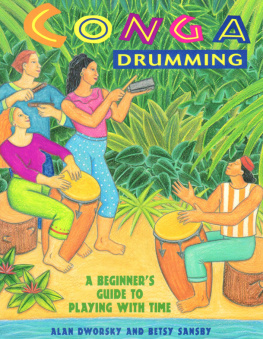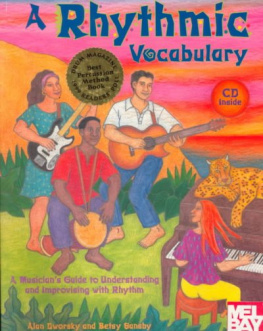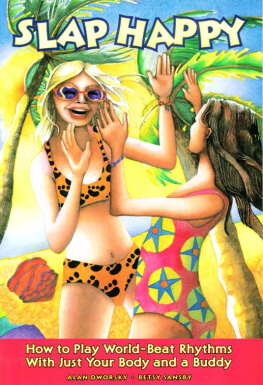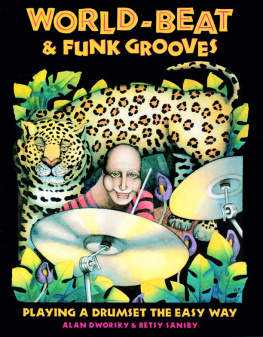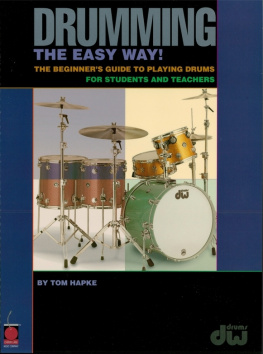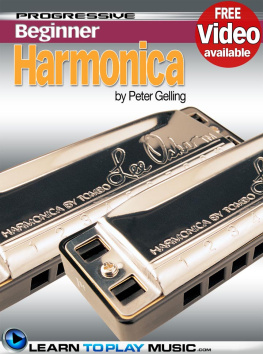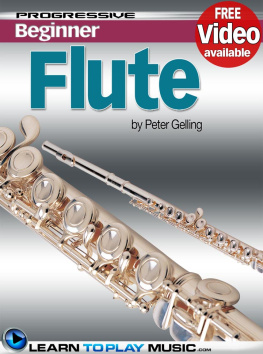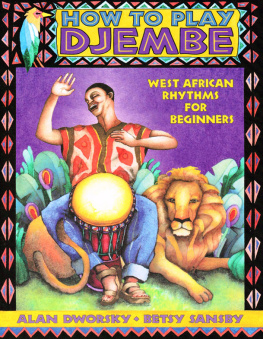

A BEGINNERS GUIDE TO
PLAYING WITH TIME
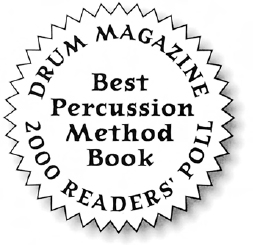
ALAN DWORSKY
AND BETSY SANSBY
DANCING HANDS MUSIC
Conga Drumming: A Beginners Guide to Playing With Time
Copyright 1994 by Alan Dworsky and Betsy Sansby. All rights reserved.
Published by Dancing Hands Music, 4275 Churchill Circle, Minnetonka, MN 55345, www.dancinghands.com.
Printed in the United States of America by Viking Press.
Printed with soy ink on recycled, acid-free paper.
Five percent of all profits from the sale of this book go to the Rainforest Action Network.
| cover art | Marie Olofsdotter, a visual artist in Minneapolis and author and illustrator of the award-winning picture book Sofia and the Heartmender. |
| inside illustrations | Jay Kendell, a freelance artist in Glendale, California. |
| book design | Anthony Desnick. |
| cover design | MacLean & Tuminelly in Minneapolis. |
| recording engineer | Jim Van Buskirk. |
Library of Congress Catalog Card Number: 93 - 91079
Publishers Cataloging in Publication
Dworsky, Alan L.
Conga Drumming: a beginners guide to playing with time / Alan Dworsky and Betsy Sansby.
p. cm.
Includes bibliographical references and index.
ISBN 0-9638801-0-1
1. Conga (Drum)-Methods-Self-instruction. I. Sansby, Betsy. II. Title.
MT662.8.D961994 786.92193
QBI93-22607
To Mickey Hart, whose book inspired us,
and to our wonderful teachers,
who taught us everything we know.
Contents
Also available from Dancing Hands Music

Welcome to the drum
The conga drum grabbed us a few years back and plunged us deep into the magical world of Afro-Cuban rhythms. It was as if after a lifetime of singing in unison we had suddenly discovered harmony. We found a way to meditate that didnt require silence, a source of community that didnt require words, and a wellspring of pleasure that never ran dry.
If your heart is beating, youre a drummer. Let the drum connect your heart to your hands. Let your hands learn to dance.
How this book works
This book will lead you step by step into a land of rhythmic enchantment. It teaches you how to play the conga drum using authentic Afro-Cuban rhythms: calypso, bomba, conga, rumba, bembe. While these rhythms are complex, the complexity often lies in the way different parts are interwoven rather than in the individual parts themselves. If you can keep steady time, there will always be some part that you can play. All the parts for each rhythm fit together like the pieces of an exquisite puzzle. This book presents the pieces one at a time and then shows you how to put them all together.
When we first started playing, we dug around in bookstores, libraries, and drum shops for a book containing these drum parts. We couldnt find one, probably because these rhythms havent traditionally been written down. We did find general books on Latin percussion, but none focused specifically on the conga drum. So one by one-just for ourselves-we began to make and collect charts of the rhythms we were learning from our teachers. When we had assembled the drum parts for several popular rhythms, we decided to put this book together.
With the drum parts in written form, you should have an easier time learning them than we did. Its a challenge to correctly imitate a rhythm by simply watching a teacher play it, and an hour after a lesson, its often hard to remember what youve learned. But chances are, if you can see a rhythm written on a page, youll be able to pick it up faster and remember it more easily.
We use box charts to present the rhythms because theyre easy for a beginner to understand and clearer than standard music notation for presenting most drum rhythms. Weve also used symbols for the various hand strokes that are easy to memorize; each symbol suggests the sound or hand position of a particular stroke. Dont be intimidated by the unfamiliar look of the charts. The system of notation couldnt be simpler, and its all explained in the next chapter.
Weve also made our charts as big as possible because we got tired of squinting at small charts on the floor next to our drums. Youll be able to read them easily no matter how good your eyesight is and no matter where you put the book while youre playing. And you wont have to put your shoe on the book to hold it open because weve used a special binding that makes the book stay open and lie flat.
We havent forgotten what it was like to be a beginner. It hasnt been all that long since we learned these rhythms ourselves. So besides writing them down, weve added comments that should make them easier for you to learn and hopefully will anticipate your questions. Sometimes we analyze the structure of the rhythms, sometimes we point out things you need to watch out for, and sometimes we use the rhythms to illustrate general principles of drumming.
The general principles are divided into three categories: Practice Principles, Playing Principles, and Group Playing Principles. Each principle is highlighted in the margin next to the text where it first appears. Weve gathered these principles from many teachers and sources and have made explicit what are often unspoken rules of drumming.
The drum parts are arranged in order of difficulty, starting with the easiest and gradually progressing to the more challenging. For this reason, youll find parts of the same rhythm presented in different chapters. We always tell you how to fit the parts together when its time, and we often repeat the chart of a drum part so you dont have to search back through the book to find it.
The book is divided into lessons that contain roughly the amount of new material a teacher would present to you in a weekly lesson. But how much time you spend on each lesson is entirely up to you. Go at your own pace. Take as much time as you need to make each rhythm come alive in your hands.
You dont need any experience with drumming to understand this book. In fact, we explain the rhythms as if you had no musical experience at all. When a traditional musical term or concept cant be avoided, its set apart from the text and explained in a specially-marked box called a Musical Time-Out.
If you do have experience drumming, youll still find plenty here thats new and challenging. Although the book starts with the basics, the advanced rhythms require considerable skill, and the later chapters should be a stretch even for advanced players.

Take as much time as you need
to make each rhythm come alive in your hands.

A single conga drum is the only thing you need to play these rhythms. Most of them are meant to be played on a single drum, and those that are meant for two can be adapted for one.
Next page
